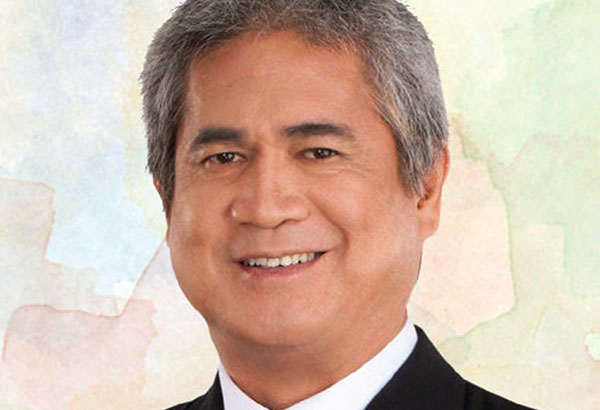MPIC brings hospitals back to pink of health

Palisoc
New sunrise industry
MANILA, Philippines — The entry of private players into the health sector spurs the government’s massive infrastructure program. For Augusto P. Palisoc Jr., president and chief executive officer of Metro Pacific Hospital Holdings Inc, Metro Pacific Investment Corp.’s holding company for all its healthcare investments, the Philippines’ health sector more than a decade ago seemed hardly a candidate as a future sunrise industry.
Various private family-owned hospitals, as well as government-run medical facilities were in bad financial straits, and many did not seem to be in a position to modernize their operations, nor spend precious capex on cutting edge heath care for their patients.
But things changed when in 2007, Palisoc, then an executive of MPIC, was approached by Manuel V. Pangilinan, and asked: should he (Pangilinan) accept a directorship at the Makati Medical Center (MMC)? The hospital was in financial difficulties and on the brink of foreclosure.
A sunrise industry
To this day, Palisoc remembers his reply to MVP: “If you accept the directorship, I am sure they will next ask for money to help save them, and I don’t think we should invest. It’s going down fast, we don’t know anything about the hospital business, and I seriously doubt if that hospital is saveable, so I think you should decline”.
Palisoc ruefully recalled his faux pas: “Having worked with MVP for more than 30 years now, it was silly of me to forget that the best way to motivate him to do something, is to tell him that it can’t be done. The rest, as they say, is history. And I am now in charge of our hospital group.”
Today, the sector has emerged as the new sunrise industry, just like the business process outsourcing companies when they began to redefine information technology during the early part of the new millennium.
Growth and investment activity has marked the sector as the government proceeds with its goal of providing universal health care to the population. Today, both the public and the private health sectors are modifying their systems and forward planning accordingly in order to align with governmental, regulatory and societal shifts.
Nowhere is this growth more apparent than in the surge of mergers, alliances and acquisitions over the past several years which has encouraged investors to participate in a growing pillar of Philippine economic growth, the health industry.
Interestingly, the multi-million pesos infusion by the private sector in terms of joint ventures with public hospitals, as well as capex investments in greenfield projects and modern medical facilities, have meant crucial support for the Duterte government’s massive infrastructure program. Dubbed Build Build Build, the program seeks to construct modern bridges and roads, mega subway systems, and world-class airports and seaports in the country in the next 10 years.
A notable example is MPIC’s Hospital Holdings which is planning to spend P10 billion to P12 billion in capital expenditures to fund its expansion plans in the next five years.
MPIC was the first company to believe in the bottom line potential of the healthcare sector when it began acquiring hospitals in Metro Manila and the rest of the country. The conglomerate’s hospital group is actively on the lookout for more investments in the healthcare sector after getting GIC, Singapore’s sovereign wealth fund through its private equity arm, as a strategic partner for the hospital business.
Currently, it has acquired as many as 14 hospitals to achieve its goal of hitting 5,000 beds. The company last year said it would invest in 10 to 15 hospitals to add around 2,000 more beds and expand existing medical facilities by another 700 to 800 beds to increase its presence in the sector across the country.
MPIC’s hospital portfolio include St Elizabeth Hospital in General Santos City, West Metro Medical Center in Zamboanga City, Davao Doctors Hospital, Makati Medical Center, Asian Hospital & Medical Center, Cardinal Santos Medical Center, Manila Doctors Hospital, Our Lady of Lourdes Hospital, De Los Santos Medical Center, Marikina Valley Medical Center, Jesus Delgado Memorial Hospital, Riverside Medical Center in Bacolod, Central Luzon Doctors Hospital in Tarlac and Sacred Heart Hospital in Malolos, Bulacan.
Other players
The MPIC hospital group is not the only one which recognized the potential of the local health care sector.
Ayala Corp. is also in on the health care action: its QualiMed Hospital, a network of healthcare facilities owned and operated by Ayala Land Inc. and Mercado General Hospital, is currently on an expansion binge.
After launching the 105-bed Qualimed Hospital in San Jose Del Monte, Bulacan province, the company was looking at Davao, Cebu, Cavite, Balintawak and Arca South as potential sites for hospital expansion in line with the target to own 10 hospitals by 2020.
The group plans to build a 200- to 300-room QualiMed Hospital in Balintawak, its base hospital in the northern part of Metro Manila, and another 200- to 300-room Qualimed Hospital in Arca South, which would be the group’s base hospital in the south of Metro Manila.
Another group, Filipino-owned Philab Industries Inc. is deep into building, and supplying medical facilities for hospitals, clinics and educational research laboratories.
It forged ties with the Department of Health and Department of Education, even teaming up with state-owned China Educational Instrument and Equipment Corp., a commercial entity retained by the China Ministry of Education, to equip some 38,000 schools in the Philippines with Math and Science tools and facilities.
More recently, Philab went into medical self-diagnosis technology in the form of the country’s first dengue self-test kits. Philab in a press briefing late last year, meanwhile, explained how it planned to establish Asia’s first ever genome facility in the Philippines.
Lesson learned
Palisoc said his team’s experience with turning Makati Med and other ailing medical facilities around, afforded them key lessons about the heathcare business.
“Hospitals could also be a good business, if managed well,” he noted. “Even if profit margins are not that high, it is a rather stable business.”
Palisoc added that they learned that the country has many good, talented doctors, and medical professionals. “They just need a well-managed, well-equipped hospital to practice in.”
A less obvious observation, Palisoc said, which soon came to light, was that “most hospital owners and managers were trained in medicine, but not in management.”
Perhaps the most profitable piece of wisdom the group culled is that “aside from opportunities to improve individual hospital operations, there could be more significant benefits from synergies if we could organize a group of hospitals.”
Finally, Palisoc offered a truism which he fervently believes in to this day: “a professionally-run hospital group could really make a contribution to improving the quality of life of our fellow Filipinos,” he said.
Best practices
Palisoc said that one of the group’s synergies is group purchasing. “Instead of each hospital negotiating individually with suppliers, we have organized our purchasing activities as a group, which is more efficient not only for each hospital, but also for the various suppliers dealing with us,” he explained. “The savings enable us to invest more in our hospitals, and, most importantly, lower prices for our customers.”
Another upside to the group’s foray into the heath business is that doctors do not have to worry about the “management” side of the business.
“Now, doctors and medical staff in our hospitals enjoy working with adequate equipment, modern technology, and a professional management atmosphere, where they can focus on curing and attending to our patients,” he said.
“In the past and even up to now, some hospitals require that doctors invest in shares of the hospital in order to be able to practice,” Palisoc pointed out. “We believe that money should not be a requirement for a doctor to practice in any hospital, because it deprives our customers from being treated by many young and good doctors who may not have the funds to invest in shares.”
Finally, Palisoc said the group’s success has provided Filipino nurses, pharmacists, physical therapists, med techs, and other medical professionals with greater reason to stay and work in the Philippine health sector.
“Dozens of young managers and nursing staff have decided to stay in the country despite calls from foreign employers because of the career growth and brighter future they see with us now,” Palisoc said. “This is because they have found greater motivation to give the very best of themselves here, where they can remain close to their families.”
Looking ahead
MPIC’s hospital group is planning on further strengthening its medical portfolio through the acquisition of up to four hospitals per year.
It is enhancing its business model through new healthcare delivery platforms like mall-based clinics and telehealth.
Palisoc said the company would continue to talk to hospital owners all over the country “to see where our next investments should go.”
Aside from the physical infrastructure, MPIC’s hospital group is also venturing into new healthcare delivery systems.
“We are looking at other healthcare delivery processes in addition to the normal hospital investments we have traditionally made,” Palisoc said.
“I think a lot of people are also talking about telehealth at the moment. This is something interesting,” Palisoc expounded, noting that the company is piloting a telehealth service through Asian Hospital.
Telehealth is the remote exchange of data between a patient at home and their doctors to assist in diagnosis and monitoring.
It taps digital technologies to deliver medical care, health information, and public health services. “Our intention is to eventually find a way to make that a sustainable economic activity,” Palisoc said, adding that the country’s archipelagic make-up would benefit from telehealth.
- Latest



























